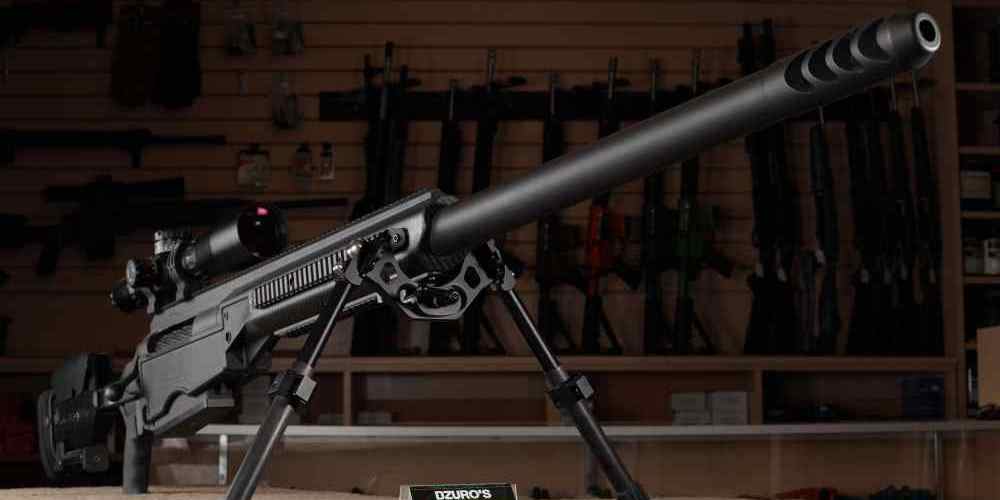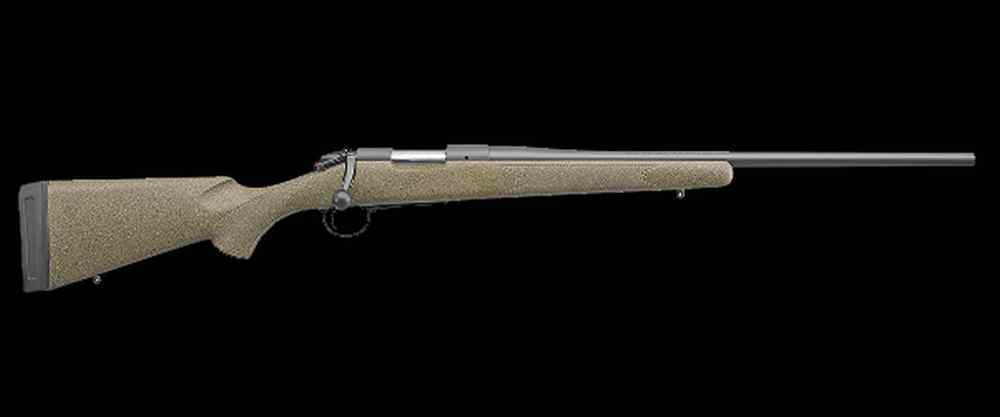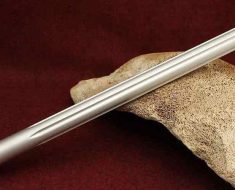Precision threading for perfect shots every time.
Benefits of Rifle Barrel Threading
Rifle barrel threading is a process that involves cutting threads into the end of a rifle barrel to allow for the attachment of various accessories such as muzzle brakes, suppressors, and flash hiders. This process offers a number of benefits to gun owners, making it a popular choice for those looking to customize their firearms.
One of the main benefits of rifle barrel threading is the ability to easily attach and detach accessories. By threading the barrel, gun owners can quickly and securely attach a variety of accessories without the need for tools or complicated installation processes. This makes it easy to switch between different accessories depending on the shooting situation or personal preference.
Another benefit of rifle barrel threading is the improved accuracy it can provide. By attaching a muzzle brake or suppressor to a threaded barrel, gun owners can reduce recoil and muzzle rise, resulting in more accurate shots. This can be especially beneficial for competitive shooters or hunters who require precise shot placement.
In addition to improved accuracy, rifle barrel threading can also help to reduce noise and muzzle flash. By attaching a suppressor to a threaded barrel, gun owners can significantly reduce the noise and muzzle flash produced by their firearm. This can be particularly useful for hunters who want to avoid spooking game or for shooters who want to protect their hearing.
Rifle barrel threading can also enhance the overall look and feel of a firearm. By adding a muzzle brake or flash hider to a threaded barrel, gun owners can customize the appearance of their firearm and make it stand out from the crowd. This can be a great way to add a personal touch to a gun and make it unique to the owner.
Furthermore, rifle barrel threading can increase the versatility of a firearm. By attaching different accessories to a threaded barrel, gun owners can adapt their firearm to suit a variety of shooting situations. Whether it’s reducing recoil for long-range shooting or minimizing noise for hunting, threaded barrels offer a level of versatility that non-threaded barrels simply can’t match.
Overall, rifle barrel threading offers a number of benefits to gun owners looking to customize and improve their firearms. From improved accuracy and reduced recoil to enhanced aesthetics and increased versatility, threaded barrels provide a range of advantages that can enhance the shooting experience. Whether you’re a competitive shooter, hunter, or gun enthusiast, rifle barrel threading is a worthwhile investment that can take your firearm to the next level.
Common Thread Patterns for Rifle Barrels
Rifle barrel threading is a crucial aspect of firearm customization and maintenance. It allows for the attachment of various accessories such as muzzle brakes, suppressors, and flash hiders. Understanding the common thread patterns for rifle barrels is essential for ensuring compatibility with these accessories.

One of the most popular thread patterns for rifle barrels is the 1/2×28 thread. This pattern is commonly used for attaching muzzle brakes and flash hiders to AR-15 rifles. It is important to note that not all barrels are threaded with this pattern, so it is essential to check the specifications of your rifle before purchasing any accessories.
Another common thread pattern is the 5/8×24 thread. This pattern is typically found on larger caliber rifles such as .308 and .300 Blackout. It is important to ensure that any accessories you purchase are compatible with this thread pattern to avoid any issues with installation.
For those looking to attach a suppressor to their rifle, the 5/8×24 thread pattern is also commonly used. Suppressors are a popular accessory for reducing noise and recoil, making shooting more enjoyable and comfortable. It is crucial to ensure that your rifle barrel is threaded with the correct pattern to properly attach a suppressor.
In addition to the 1/2×28 and 5/8×24 thread patterns, there are several other less common thread patterns that may be found on rifle barrels. These include the 9/16×24, 9/16×28, and 11/16×24 patterns. It is important to research the specific thread pattern of your rifle barrel before purchasing any accessories to ensure compatibility.
When purchasing accessories for your rifle, it is essential to pay attention to the thread pitch in addition to the thread pattern. The thread pitch refers to the distance between each thread on the barrel. Common thread pitches for rifle barrels include 24 and 28 threads per inch. It is crucial to match the thread pitch of your barrel with the accessories you are purchasing to ensure a proper fit.
In conclusion, understanding the common thread patterns for rifle barrels is essential for ensuring compatibility with various accessories such as muzzle brakes, suppressors, and flash hiders. It is important to research the specific thread pattern and pitch of your rifle barrel before purchasing any accessories to avoid any issues with installation. By taking the time to familiarize yourself with these common thread patterns, you can ensure that your rifle is properly equipped for optimal performance and functionality.
Tools and Equipment Needed for Rifle Barrel Threading
Rifle barrel threading is a process that involves cutting threads into the end of a rifle barrel to allow for the attachment of various accessories such as muzzle brakes, suppressors, or flash hiders. This process requires precision and the right tools and equipment to ensure a proper fit and function. In this article, we will discuss the tools and equipment needed for rifle barrel threading and provide some tips on how to get the job done right.
One of the most important tools needed for rifle barrel threading is a lathe. A lathe is a machine that rotates a workpiece on its axis to perform various operations such as cutting, sanding, drilling, or threading. When it comes to rifle barrel threading, a lathe is essential for cutting the threads into the barrel with precision and accuracy. It is important to use a lathe that is specifically designed for gunsmithing work to ensure the best results.
In addition to a lathe, you will also need a threading tool. A threading tool is a cutting tool that is used to create threads on a workpiece. There are different types of threading tools available, including single-point threading tools and die heads. When it comes to rifle barrel threading, a single-point threading tool is typically used to cut the threads into the barrel. It is important to choose a threading tool that is the right size and pitch for the specific threading job you are doing.
Another important piece of equipment needed for rifle barrel threading is a thread gauge. A thread gauge is a tool used to measure the pitch and diameter of the threads on a workpiece. It is important to use a thread gauge to ensure that the threads on the barrel are cut to the correct specifications. Using a thread gauge will help you avoid any issues with fitment or compatibility when attaching accessories to the threaded barrel.
When it comes to cutting the threads into the barrel, it is important to use cutting oil. Cutting oil is a lubricant that is used to reduce friction and heat during the cutting process. This helps to prolong the life of the cutting tool and ensures a clean and precise cut. It is important to apply cutting oil to the barrel and cutting tool regularly during the threading process to ensure smooth and accurate cuts.
In addition to the tools and equipment mentioned above, you may also need some other supplies such as safety goggles, gloves, and a workbench. Safety goggles and gloves are important for protecting your eyes and hands from any metal shavings or debris that may be produced during the threading process. A sturdy workbench is also important for providing a stable and secure surface to work on.
In conclusion, rifle barrel threading requires the right tools and equipment to ensure a proper fit and function. By using a lathe, threading tool, thread gauge, cutting oil, and other supplies, you can successfully cut threads into a rifle barrel with precision and accuracy. Remember to always follow safety precautions and take your time to ensure a job well done. With the right tools and equipment, you can tackle rifle barrel threading with confidence and skill.
Step-by-Step Guide to Threading a Rifle Barrel
Rifle barrel threading is a process that allows you to attach various accessories to your rifle, such as muzzle brakes, suppressors, or flash hiders. Threading a rifle barrel may seem like a daunting task, but with the right tools and knowledge, it can be done successfully. In this step-by-step guide, we will walk you through the process of threading a rifle barrel.
The first step in threading a rifle barrel is to ensure that you have the correct threading specifications for your specific rifle. Different rifles may have different thread pitches, so it is important to do your research and make sure you have the right information before starting the process.
Once you have determined the correct threading specifications for your rifle, the next step is to gather the necessary tools and materials. You will need a barrel vise, a barrel nut wrench, a thread alignment tool, a cutting tool (such as a lathe or a die), and cutting oil. It is important to use high-quality tools to ensure a clean and precise cut.
Before you begin threading the barrel, it is crucial to properly secure the barrel in a barrel vise to prevent any movement during the threading process. Once the barrel is securely in place, use the barrel nut wrench to remove the barrel nut from the rifle.
Next, use the thread alignment tool to ensure that the threading is aligned correctly with the barrel. This step is crucial to ensure that the threads are cut straight and clean. Once the alignment is confirmed, it is time to start cutting the threads.
Using the cutting tool and cutting oil, carefully cut the threads into the barrel. It is important to go slowly and make sure that the threads are cut evenly and to the correct depth. This process may take some time, but it is important to be patient and precise to ensure a proper fit for your accessories.
Once the threads have been cut, it is important to clean the barrel thoroughly to remove any metal shavings or debris. This will help prevent any damage to your rifle or accessories when attaching them to the barrel.
After cleaning the barrel, it is time to test the threads by attaching the desired accessory. Make sure that the accessory fits snugly and securely onto the barrel. If there are any issues with the fit, you may need to recut the threads or make adjustments as needed.
Once you are satisfied with the fit of the accessory, it is important to properly torque the barrel nut back onto the rifle. This will ensure that the barrel is securely attached and will prevent any movement or loosening during use.
In conclusion, threading a rifle barrel is a technical process that requires precision and attention to detail. By following this step-by-step guide and using the right tools and materials, you can successfully thread your rifle barrel and attach various accessories with ease. Remember to take your time, be patient, and always prioritize safety when working on your rifle.
Tips for Maintaining Threaded Rifle Barrels
Rifle barrel threading is a common practice among gun enthusiasts and professionals alike. It involves cutting threads into the end of a rifle barrel to allow for the attachment of various accessories such as muzzle brakes, suppressors, and flash hiders. While threading a rifle barrel may seem like a simple task, there are several important factors to consider to ensure the job is done correctly and safely.
One of the most important things to keep in mind when threading a rifle barrel is the thread pitch. The thread pitch refers to the distance between each thread on the barrel. It is crucial to match the thread pitch of the accessory you are attaching to the thread pitch of the barrel to ensure a proper fit. Using the wrong thread pitch can result in a loose or misaligned attachment, which can affect the accuracy and performance of the rifle.
Another important consideration when threading a rifle barrel is the depth of the threads. The threads should be cut to the correct depth to ensure a secure attachment of the accessory. If the threads are too shallow, the accessory may not screw on properly, leading to a loose fit. On the other hand, if the threads are too deep, the accessory may not fully tighten, which can also affect the performance of the rifle.
It is also essential to use the right tools and equipment when threading a rifle barrel. A high-quality threading kit specifically designed for rifle barrels should be used to ensure clean and precise threads. Using the wrong tools or equipment can result in damaged threads, which can be difficult and costly to repair.
Proper maintenance of threaded rifle barrels is also crucial to ensure their longevity and performance. After attaching an accessory to the barrel, it is essential to regularly check and tighten the attachment to prevent it from coming loose during use. Additionally, cleaning the threads regularly with a brush and solvent can help prevent buildup of dirt and debris, which can affect the functionality of the attachment.
When storing a rifle with a threaded barrel, it is important to protect the threads from damage. Using a thread protector or muzzle cap can help prevent dirt, moisture, and other debris from entering the threads and causing damage. Additionally, storing the rifle in a secure and dry location can help prevent rust and corrosion, which can also affect the performance of the threaded barrel.
In conclusion, rifle barrel threading is a common practice among gun enthusiasts and professionals, but it is essential to consider several factors to ensure the job is done correctly and safely. Matching the thread pitch, cutting the threads to the correct depth, using the right tools and equipment, and properly maintaining threaded rifle barrels are all important aspects to keep in mind. By following these tips, you can ensure that your threaded rifle barrel remains in top condition and performs at its best.




